Things To Do

Ohiopyle State Park
In 2021, the couple hiked the Ferncliff Trail with their dear friends Matthew and Jaime Emerson. Over a year later, Eric proposed to Melanie on this trail with the same company. Their engagement photos? Yeah, they were taken here too. Needless to say, but this is one of their favorite places to visit
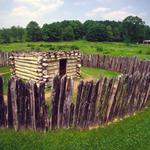
Fort Necessity National Battlefield
The battle at Fort Necessity in the summer of 1754 was the opening action of the French and Indian War. This war was a clash of British, French and American Indian cultures. It ended with the removal of French power from North America. The stage was set for the American Revolution.

Laurel Caverns
Laurel Caverns is a large natural calcareous sandstone cave located 50 miles south of Pittsburgh. Most of the passage ceilings in its four mile labyrinth are between ten and twenty feet high (many as high as 50 feet) with an average width of over twelve feet. This makes it the largest cave in Pennsylvania. If classified as a sandstone cave, it is the largest sandstone cave in the world. The cave itself is situated beneath a 435 acre privately owned geological preserve. Because this property is at the top of Chestnut Ridge, all of the water that enters the cave is pristine.

Flight 93 National Memorial - Visitor Center
On Tuesday morning, September 11, 2001, the U.S. came under attack when four commercial airliners were hijacked and used to strike targets on the ground. Nearly 3,000 people tragically lost their lives. Because of the actions of the 40 passengers and crew aboard one of the planes, Flight 93, the attack on the U.S. Capitol was thwarted.

Fallingwater
Fallingwater is a house designed in 1935 by renowned American architect Frank Lloyd Wright (1867-1959) for the Kaufmann family, owners of Pittsburgh’s largest department store. Frank Lloyd Wright’s Fallingwater is one of his most widely acclaimed works and best exemplifies his philosophy of organic architecture: the harmonious union of art and nature. Fallingwater is located in the mountains of Southwestern Pennsylvania, also known as the Laurel Highlands, in Mill Run, Fayette County, which is about 70 miles southeast of Pittsburgh. Wright designed Fallingwater to rise above the waterfall over which it is built. Local craftsmen quarried native sandstone and other materials from the property and completed the construction of the main house, guest house and service wing in 1939.
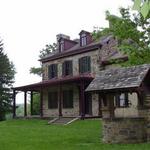
Friendship Hill National Historic Site
Albert Gallatin is best remembered for his thirteen year tenure as Secretary of the Treasury during the Jefferson and Madison administrations. In that time he reduced the national debt, purchased the Louisiana Territory and funded the Lewis & Clark exploration. Gallatin's accomplishments and contributions are highlighted at Friendship Hill, his restored country estate
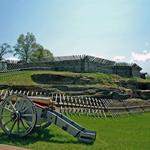
Fort Ligonier
As summer waned in 1758, the site of a new fortification was chosen by the British army that overlooked the Loyalhanna Creek. It was the last in a string of fortifications along the newly cut Forbes Road that would ultimately stretch from Philadelphia to the site of French Fort Duquesne, the ultimate objective of the Forbes Campaign. When Fort Duquesne fell to the British army in late November of 1758, construction of a new fort, Fort Pitt, began, and the land on which it rose was named Pittsburgh. Find out more about how Fort Ligonier made Pittsburgh possible as you explore the grounds of the finest reconstructed fortification from the French and Indian War.

Phipps Conservatory and Botanical Gardens
Phipps Conservatory and Botanical Gardens is a Pittsburgh gem — a thriving oasis with many unique environments to explore. Begin your journey in our LEED®-certified Welcome Center before entering our exquisite 1893 glasshouse with ever-changing displays. Then, continue on to the Tropical Forest Conservatory and the Center for Sustainable Landscapes, one of the greenest buildings on Earth. Be our guest and let us indulge your senses with breathtaking seasonal flower shows and exhibits; groundbreaking sustainable architecture; gorgeous outdoor gardens and green rooftops; and more.

The Andy Warhol Museum
Located in Pittsburgh, Pennsylvania, the place of Andy Warhol’s birth, The Andy Warhol Museum holds the largest collection of Warhol’s artworks and archival materials. We are one of the most comprehensive single-artist museums in the world and the largest in North America.
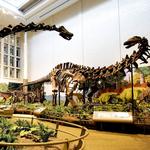
Carnegie Museum of Natural History
Carnegie Museum of Natural History is one of the great cultural institutions funded and built by philanthropist Andrew Carnegie, who made his fortune in Pittsburgh’s steel industry. Carnegie’s vision was that the museum would exhibit the wonders of nature to everyone from mill workers to affluent society members. When it opened in 1895, the museum’s early collections included artifacts from ancient Egypt, beautiful minerals, exotic wildlife taxidermy, and, of course, dinosaurs. Carnegie, an ardent evolutionist, had a particular interest in dinosaurs that fueled paleontology expeditions. In the late 1890s, expeditions to the western United States led to the discovery of Diplodocus carnegii and many other dinosaurs. Early expeditions yielded more than 400 crates of fossils that kick-started the dinosaur collection that filled the now-famous Dinosaurs in Their Time hall.
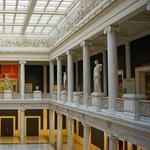
Carnegie Museum of Art
In 1895, Andrew Carnegie, the Scotland-born philanthropist and titan of the steel industry, founded the Carnegie Institute, now Carnegie Museums of Pittsburgh, alongside Carnegie Library in a shared building in the heart of the Oakland neighborhood in Pittsburgh, Pennsylvania. Conceived as a gift to the city and dedicated to the pursuits of art, music, literature, and natural science, Carnegie’s “monument,” as he called it, immediately became one of the most significant cultural institutions in the nation. The Institute is but one of many existing institutions, foundations, and endowments that carry on his philanthropic legacy to this day. Carnegie Museum of Art is one of four Carnegie Museums of Pittsburgh, along with Carnegie Museum of Natural History, Carnegie Science Center, and The Andy Warhol Museum. The Carnegie Museums of Pittsburgh strive to preserve and expand the resources of art and science as agents of personal growth and social advancement in Pittsburgh and beyond.
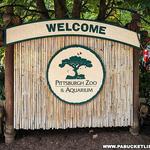
Pittsburgh Zoo & Aquarium
The Pittsburgh Zoo is one of only six major zoo and aquarium combinations in the United States and is home to more than 8,000 animals representing over 600 species. The organization’s research and conservation projects are recognized globally and represented on all seven continents and five oceans. As a regional attraction with a global impact, the Zoo is a 501(c)(3) non-profit, earning the Charity Navigator’s prestigious 4-star rating. The Zoo is American Humane Conservation-certified and accredited by both the Zoological Association of America and the Alliance of Marine Mammal Parks and Aquariums.
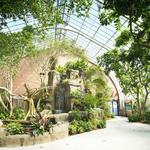
National Aviary
The National Aviary is America’s only independent indoor nonprofit zoo dedicated to birds. Located in Allegheny Commons Park on Pittsburgh’s historic Northside, the National Aviary is home to more than 500 birds representing more than 150 species from around the world, many of them threatened or endangered in the wild. The National Aviary’s large walk-through habitats create an experience unlike any other—an intimate, up-close interaction between visitors and free-flying birds, including opportunities to hand-feed and meet many species rarely found in zoos anywhere else in the world.

Kennywood
A visit to Kennywood is a Pittsburgh tradition. For over 125 years, families have made countless memories at this USA Today 10 Best Theme Park. With eight exciting roller coasters, extreme thrill rides, water attractions, and mild offerings like Kiddieland and Thomas Town for the little ones, Kennywood offers something for everyone! And for every season with the hair-raising Phantom Fall Fest and award-winning Holiday Lights events, featuring Rudolph the Red-Nosed Reindeer!
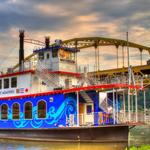
Gateway Clipper Fleet
The Gateway Clipper Fleet has been sailing the Three Rivers (the Allegheny, Monongahela, and Ohio) for over 50 years and is locally owned and operated by third generation owner Terry Wirginis. Our crew is dedicated to providing local passengers and visitors from around the globe with a true Pittsburgh experience. There’s no better way to see this breathtaking city than aboard one of our riverboats! Our riverboat cruises offer the best views of the “Steel City,” featuring the stunning skyline, bridge architecture, and the natural beauty along the riverbanks. Take in the Pittsburgh of today, while also getting a glimpse into her glorious past. We also offer renowned Pittsburgh dining cruises, featuring delicious buffets prepared by our award-winning executive chef, with menus using the best locally grown and prepared products.
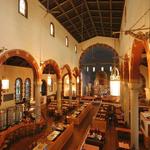
The Church Brew Works
The Church Brew Works is a brewpub in Pittsburgh, Pennsylvania, United States, set in the confines of a restored Roman Catholic church (formerly St. John the Baptist Church). The brewpub is located at 3525 Liberty Avenue in the Lawrenceville neighborhood of Pittsburgh, Pennsylvania. The church building was originally built in 1902, and had been used as a church until 1993. Its doors opened as The Church Brew Works on August 1, 1996, after the building underwent extensive renovation, necessitated by years of lying dormant after being officially deconsecrated by the Diocese of Pittsburgh in 1993. In 2012, Pittsburgh Magazine named it one of the best breweries in Pittsburgh.
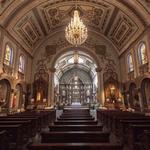
Saint Anthony Chapel
Saint Anthony Chapel is a Catholic chapel in Pittsburgh, Pennsylvania, within the Diocese of Pittsburgh. It was built in 1880 by Fr. Suitbert Mollinger, who was at that time pastor of Most Holy Name of Jesus Parish in the neighborhood of Troy Hill, the chapel houses 4,000 to 5,000 religious relics, making it the largest collection of relics outside the Vatican Notable among the chapel's collection are what purport to be the complete skeletal remains of a saint named Demetrius (housed underneath the altar), the skulls of Saint Macharius and a saint named Stephana, skulls of the martyred companions of Saint Ursula, the skull of Saint Theodore, the tooth of the chapel's patron, Saint Anthony of Padua, and a thorn from the Crown of Thorns.
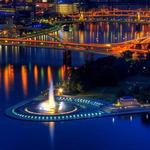
Point State Park
Point State Park (locally known as The Point) is a Pennsylvania state park which is located on 36 acres (150,000 m2) in Downtown Pittsburgh, Allegheny County, Pennsylvania, USA, at the confluence of the Allegheny and Monongahela rivers, forming the Ohio River. Built on land that was acquired via eminent domain from industrial enterprises during the 1950s, this park opened in August 1974 after construction was completed on its iconic fountain. The park also includes the outlines and remains of two of the oldest structures in Pittsburgh, Fort Pitt and Fort Duquesne. The Fort Pitt Museum, which is housed in the Monongahela Bastion of Fort Pitt, commemorates the French and Indian War (1754–63), during which the area soon to become Pittsburgh became a major battlefield. It was designated as a National Historic Landmark in 1960 for its role in the strategic struggles between Native Americans, French colonists, and British colonists, for control of the Ohio River watershed.
